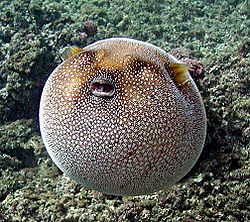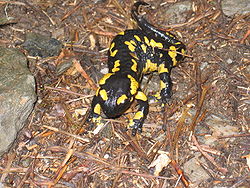Batesplate ArM
Plate illustrating Batesian mimicry between Dismorphia species (top row, third row) and various Ithomiini (Nymphalidae) (second row, bottom row)
Plate LVI.
Fig. 1. Leptalis Theonoë, var. Erythroë.— St. Paulo, 69° W. long.
Fig. 2. Leptalis Theonoë, var. Erythroë.— St. Paulo.
Fig. 3. Leptalis Theonoë, var. Erythroë.— St. Paulo.
Fig. 3 a. Ithomia Orolina, var. Chrysodonia.— St. Paulo. The linking variations between L. Erythroë and Theonoë can be traced through the varieties 8, 5, and 6 of the preceding Plate. The substitution of red for white in the fore wings is seen to be a simple variation. Some traces of the narrowing of the red margin of the hind wing are also seen. The imitation of Ithomia is not nearly so close as it is in the cases of figs. 1 and 2 of the preceding and fig. 4 of the present Plate, but there is a considerable approximation, giving the appearance of a striving after a correct imitation. The selection of individuals having the most faithful likeness is here either not rigid or we see the formation of an exact mimetic analogue in process.
Fig. 4. Leptalis Theonoë, var. Leuconoë.— St. Paulo.
Fig. 4a. Ithomia Ilerdina (Hewitson).— St. Paulo. This Leptalis appears at first sight an absolutely distinct species, but it is plainly a modification whose adaptation is complete. As to the fore wings, the vacillating nature of the colours is seen in figs. 4, 6, and 8 of Plate LV. in the clearest manner. The hind wings appear very peculiar, on account of the milky colour; but this is shown to arise by variation in Ithomiæ, which exhibit all the grades of variation from dusky to white nervures and ground of the hind wing.
Fig. 5. Leptalis Nehemia (of authors). — New Granada and S. Brazil. Figured to show the normal form of the family (Pieridæ, called in England "Garden White" Butterflies) to which Leptalis belongs. The contrast in form and colours points to the conclusion that all the other forms of Leptalis are perverted from the usual facies of the family by long-continued process of adaptation to the Heliconidæ, in whose company (each species with its Heliconian model) they are solely found.
Fig. 6. Leptalis Theonoë, var. Argochloë. — St. Paulo.
Fig. 6 a. Ithomia Virginia (Hewits.). — St. Paulo. The links of modification may be traced also with respect to this apparently distinct Leptalis. The shape of the spot of the fore wing is seen to be very variable in figs. 1, 2, 3 of this Plate, and in 9 and 4 of Plate LV.
Fig. 7- Leptalis Amphione, var. Egaëna. — Ega.
Fig. 7a. Mechanitis Polymnia, var. Egaënsis. — Ega.
Fig. 8. Leptalis Orise (Boisduval). — Cuparí, 55° W. long.; also Cayenne.
Fig. 8a. Methona Psidii (Linnæus). — Cuparí; also Cayenne.
— Bates, Henry Walter, in: [1]
- ↑ Bates, Henry Walter (1862). "Contributions to an insect fauna of the Amazon Valley - Lepidoptera: Heliconidae". Transactions of the Linnean Society (23): plate 56, after p. 566. Linnean Society of London. ISSN 1945-9432.
| Änderungen: Bearbeitung von Image:Batesplate.jpg | |
Dieses Bild wurde von der Fotowerkstatt bearbeitet. Auch du kannst uns Bilder vorschlagen, um sie verbessern zu lassen.
Relevante Bilder
Relevante Artikel
Schuppe (Schmetterling)Die Schuppen der Schmetterlinge finden sich auf ihren Flügeloberseiten und werden auch „Schmetterlingsstaub“ genannt. Sie sind charakteristisch für die Ordnung der Schmetterlinge und waren auch namensgebend für ihre wissenschaftliche Bezeichnung als „Lepidoptera“. Schuppen können auch auf Kopf- (Caput), Brust- (Thorax) und Hinterleibabschnitt (Abdomen) sowie Genitalien ausgebildet sein. Die Schuppe ist der kleinste mosaikförmige Teil der Farbgebung des Schmetterlingsflügels. Beschuppung der Schmetterlinge bezieht sich immer nur auf deren Adultformen, die fertig ausgebildeten Imagines. .. weiterlesen
AposematismusAposematismus, gelegentlich auch Warnfärbung genannt, bezeichnet in der Verhaltensbiologie die auffällige Färbung von Tieren, mit der potentiellen Fressfeinden nicht nur Präsenz, sondern auch Ungenießbarkeit und/oder Wehrhaftigkeit signalisiert wird. Aposematismus ist damit das Gegenteil der Tarnung. Aber aus der Ferne betrachtet, verschwimmen oft die Konturen von Warnzeichnungen und werden zu einer Tarnfärbung. .. weiterlesen
MimikryDie Mimikry bezeichnet in der Biologie eine Form der Nachahmung visueller, auditiver oder olfaktorischer Signale, die dazu führt, dass dem Nachahmer und Fälscher Vorteile durch die Täuschung des Signalempfängers entstehen. Bei der Mimikry können aus Sicht des Signalfälschers insbesondere zwei häufige Varianten unterschieden werden: zum einen Schutzmimikry durch Imitation von Vorbildern, die zum Beispiel potentielle Fressfeinde abschrecken; zum anderen Lockmimikry durch Imitation von Vorbildern, die zum Beispiel für potentielle Beute oder für Bestäuber attraktiv sind. .. weiterlesen






































